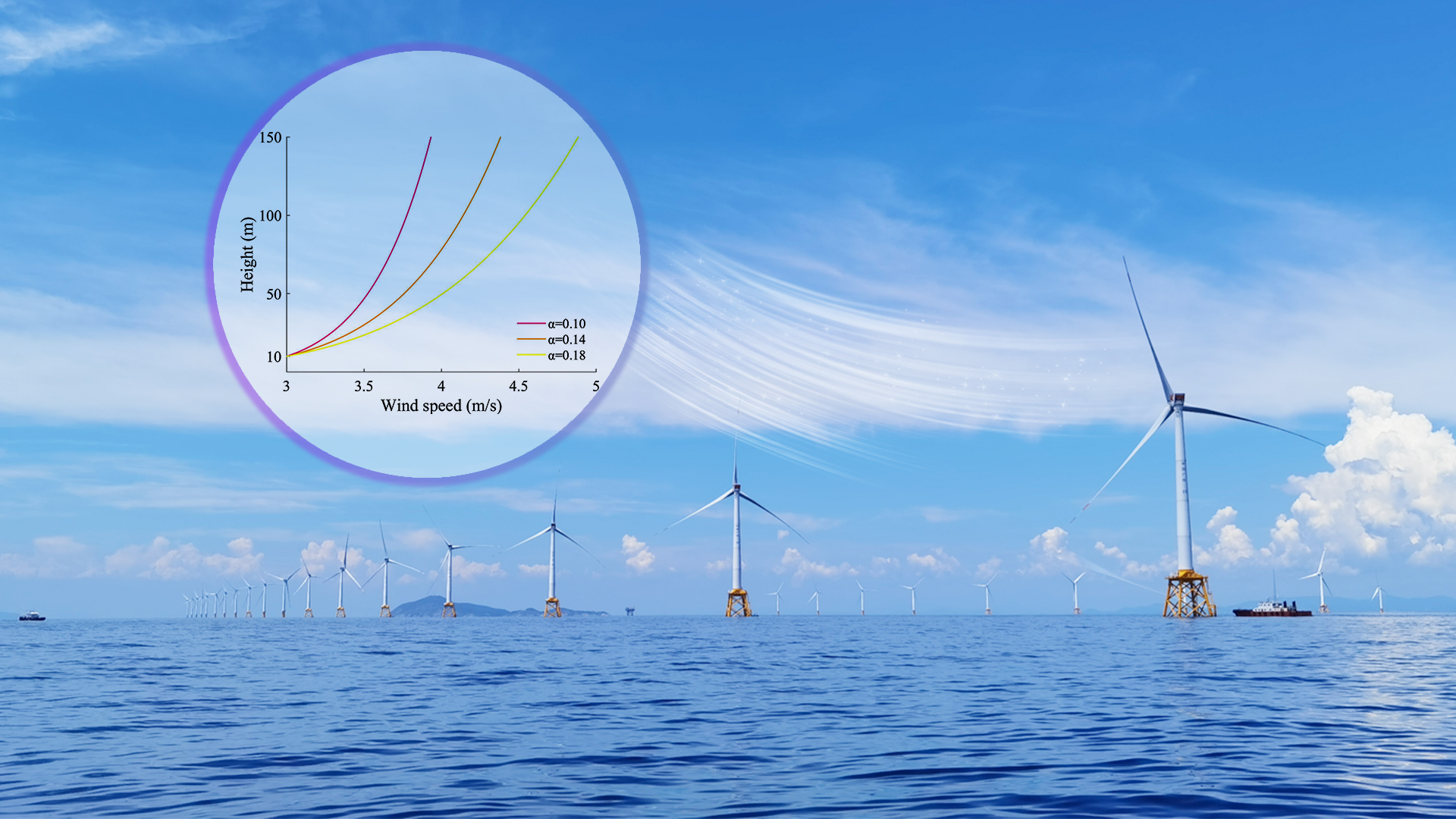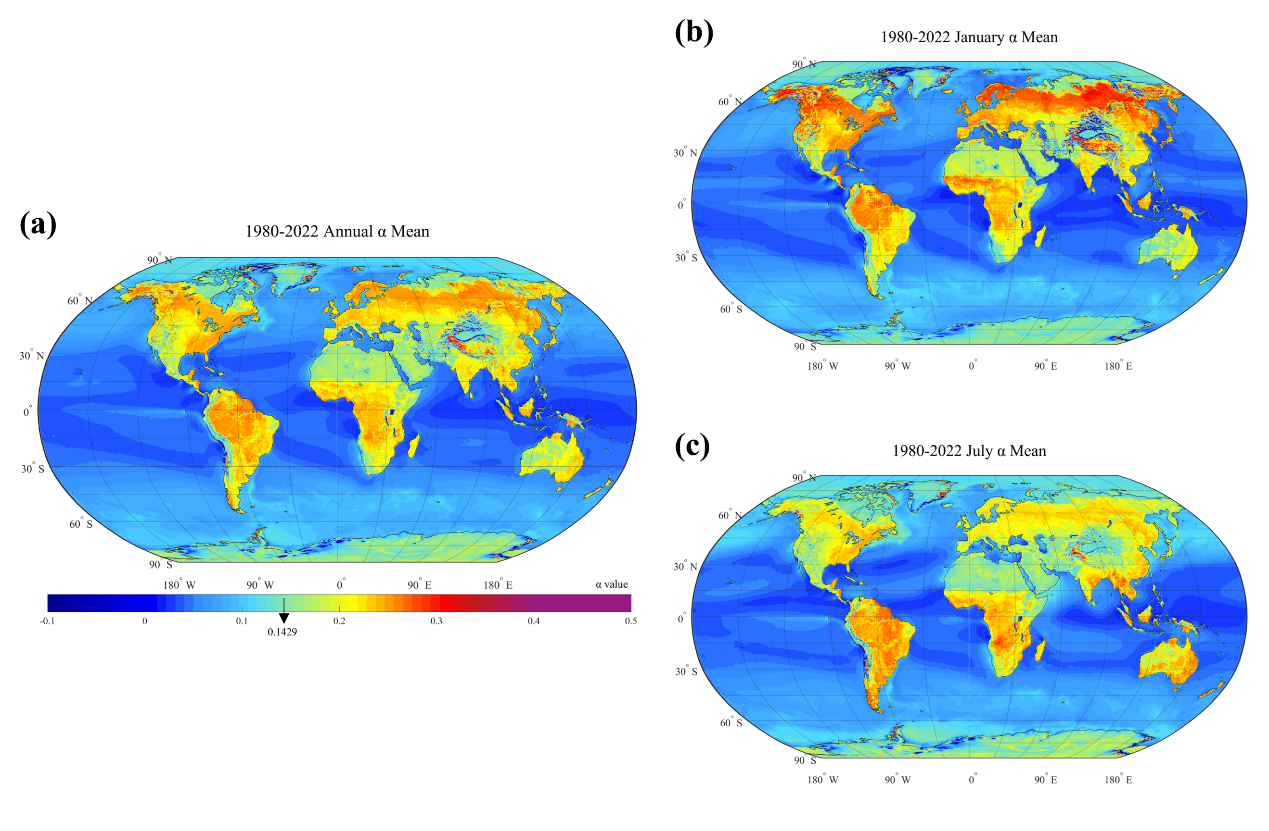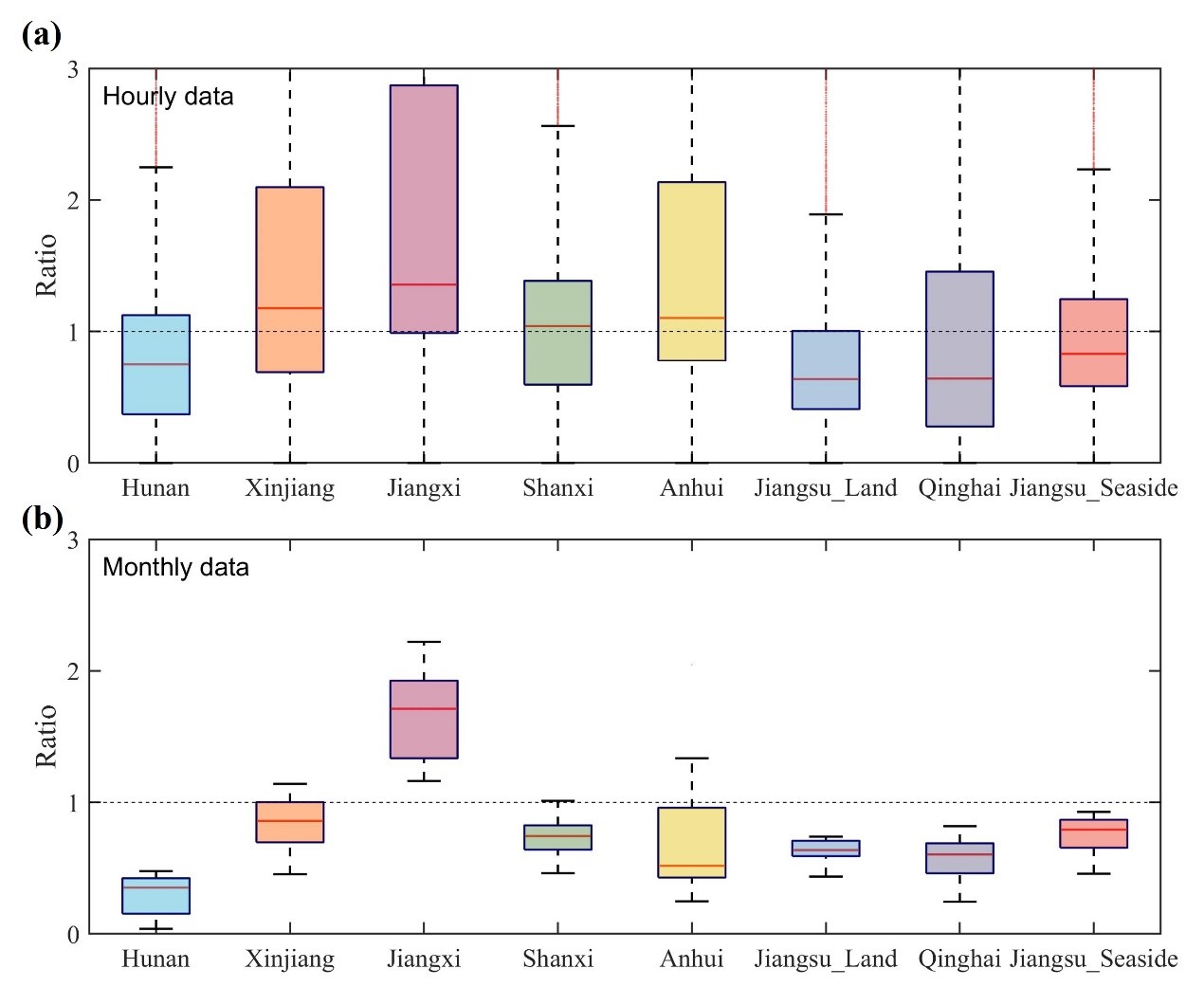Wind energy currently shares around 7% of today’s global total electricity needs and is projected to generate one-third of total electricity needs by 2050. Therefore, assessing accurate global wind energy generation is necessary.
Turbine heights usually range from 50 to 150 meters above ground. Yet available wind speed data from in-situ stations are mostly at the height of 10 meters. In wind energy-related research, it is often necessary to extrapolate the 10 m wind speed to the hub-height wind speed for wind energy calculation. In order to reduce computing resources and be able to flexibly obtain wind speed at any height within the hub-height range, many studies use the wind power law that is consistent with the vertical profile of wind speed in the atmospheric boundary layer.
In many studies that used the wind power law to extrapolate wind speed, the wind power law exponent α was often set to a constant 1/7 (0.1429), or the reference value was calculated based on limited site data. This may bring errors to the wind energy assessment. In recent years, although many related studies have used various wind speed data to explore the spatiotemporal variation of α to reduce the error of wind energy assessment, these studies all have limitations in spatial distribution and time span.

Xinrong Yang, an undergraduate of the School of Environmental Science and Engineering at the Southern University of Science and Technology (SUSTech), was part of a research team that has recently published their results on the global spatiotemporal variation of wind power law exponent.
The paper, entitled “Spatiotemporal variation of power law exponent on the use of wind energy” has been published in Applied Energy (If: 12).

Professor Zhenzhong Zeng’s research team conducting their research
This study combined reanalysis data with wind tower measured data for the first time, using global hourly reanalysis wind speed data from 1980 to 2022 and high-frequency wind speed data from multiple heights of eight wind towers in China to analyze the global spatiotemporal variation of the power law exponent α. They found that the α value has obvious ocean-land and topographic differences in the global ocean and land (Figure 1), which is mainly affected by surface roughness. Among them, the average values of the top ten countries in the global wind turbine market are all between 0.18 and 0.25, and the global ocean average is 0.07. It means that if the 1/7 value is used uniformly, the global onshore wind resources will be underestimated by about 7% on average, and offshore wind resources will be overestimated by about 19% overall. In addition to spatial variation, the α value exhibits varying degrees of temporal variation in diurnal, monthly, and interannual trends. This study also used wind tower data to verify the results of the global analysis (Figure 2). While ensuring the reliability of the α value calculation, it also verified the particularity of the wind profile in complex terrain such as mountains.

Figure 1. Spatial pattern of multi-year average α value calculated from annual, January, and July data on a global scale

Figure 2. The relationship between the results based on wind tower data and ERA5 reanalysis data
With the continuous development of onshore wind farms and the rise of offshore wind farms, the global wind power law exponent α data with temporal and spatial variation provided by this study will play a more important reference role in the overall assessment of global wind energy.
Xinrong Yang from SUSTech is the first author of this paper. Associate Professor Zhenzhong Zeng is the corresponding author, and Research Assistant Professor Rongrong Xu and Associate Professor Xitian Cai are the co-corresponding authors. SUSTech is the first affiliation of the paper.
This study was supported by the National Natural Science Foundation of China (NSFC), Guangdong Basic and Applied Basic Research Foundation, and the Start-Up Fund of SUSTech.
Paper link: https://doi.org/10.1016/j.apenergy.2023.122441
To read all stories about SUSTech science, subscribe to the monthly SUSTech Newsletter.
Proofread ByAdrian Cremin, Yingying XIA
Photo BySchool of Environmental Science and Engineering